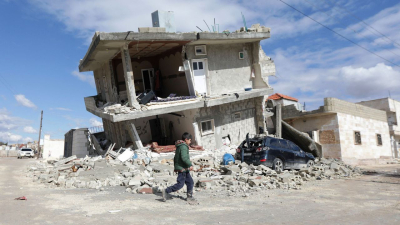
You must have often read about earthquakes but do you know that the study of earthquake is called seismology?
Seismology is a scientific discipline to study earthquakes caused by the passage of seismic waves through Earth's rocks.
Seismologists have studied quakes induced by human activities such as impounding water behind high dams and detonating underground nuclear explosions.
Earthquakes
Earthquakes occur most often where rock masses move in relation to one another. The major fault lines of the world are located at the fringes of the huge tectonic plates that make up Earth's crust. Earthquakes are recorded by instruments called seismographs.
There are four seismic zones globally (an area where earthquakes tend to focus): Zone Il to V (of which Zone V is seismically the most active region and zone II is the least). As per the seismic zoning map of India, the total area is classified into four seismic zones.
The need for international exchange of readings on earthquakes was recognised by British geologist John Milne, whose work resulted in the International Seismological Summary (ISS) being set up immediately after the World War I.
In cooperation with the British Association for the Advancement of Science, Milne had set up a number of seismographic stations around the world.
At present there are several seismological centres across the world to study and inform about the intensity of earthquakes.
International Seismological Centre
International Seismological Centre was formed in Edinburgh in 1964 with the help of UNESCO. It was a successor to the ISS. In 1970, the Centre became an international non-governmental body, funded by institutions from across the world.
Global Seismographic Network
The Global Seismographic Network (GSN) is a digital seismic network that provides free, realtime, open access data through Incorporated Research Institutions for Seismology (IRIS). It has over 150 modern seismic stations distributed globally.
National Center for Seismology
National Center for Seismology (NCS) is the nodal agency that monitors earthquake activity in the country. It maintains the National Seismological Network of more than 150 stations across the country.
It monitors earthquake swarm and aftershock by deploying a temporary observatory close to the affected region. It also monitors earthquake activity all across the country through its around-the-clock monitoring center.
The information of earthquakes reported by NCS is disseminated to the central and state disaster authorities concerned in the least possible time to initiate adequate mitigation measures.
NCS provides data on earthquake and seismicity reports of specific regions to even agencies such as insurance companies, industrial units, river valley projects, etc.
The first seismological observatory of the country was established at Alipore (Kolkata) on December 1, 1898, after the 1897 Shillong plateau earthquake.
Meanwhile, the occurrence of devastating earthquakes such as the 1905 Kangra earthquake and 1934 Nepal-Bihar demanded strengthening of the national seismological network progressively from a meagre six in 1940 to eight in 1950, 15 in 1960, and 18 in 1970.
Picture Credit : Google
Leave a Reply